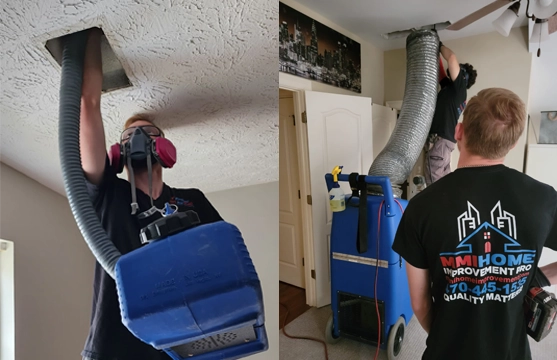Digital Technologies in Real Estate: How Virtual Tours and 3D Renderings Speed Up Sales
The real estate market has undergone a profound transformation in recent years as a result of the rapid development of digital technology. Marketing a home once entailed physical tours, paper fliers, and static photos that were able to convey only a two-dimensional perspective of a home. However, with virtual tours and 3D renderings, home selling and marketing have been revolutionized.
Buyers anticipate convenience and efficiency today. Instead of driving from property to property, buyers prefer to visit homes from the comfort of their own screens. Virtual tours and 3D renderings provide an immersive and interactive experience that allows buyers to visualize properties in detail before even entering the premises. The digital solutions not only conserve time but also increase engagement, qualify serious buyers, and accelerate the sales process.
For sellers, utilizing digital technology is no longer optional—it’s a requirement. Listings that feature high-quality virtual tours and realistic 3D renderings garner more online attention, generate more interest, and can expect to receive offers sooner than those that do not.
The Digital Transformation of Real Estate
Real estate has always been a face-to-face business. Potential buyers would visit multiple homes in person, meet with agents to discuss their options, and make offers on physical marketing materials. While these classic methods persist, technology has changed the home-buying process.
These days, most home buyers begin their search online, looking at listings, viewing pictures, and reading about communities before they even call an agent. With virtual tours and 3D renderings, the online experience of buying a home has become more interactive and engaging. With these technologies, consumers can move beyond flat photos and gain a real sense of the room, the floor plan, and the potential of a home.
The transition to online real estate promotion isn’t a trend—it’s necessary. While increasing numbers of shoppers are transacting remotely, sellers must climb on board and implement these cutting-edge technologies as part of their advertising campaigns.
The Power of Virtual Tours
Virtual tours refer to a 360-degree walkthrough of a home where potential customers can view every room as though they were in the home themselves. Unlike traditional fixed-angle pictures, virtual tours allow buyers the freedom of navigating a property on their own terms.
This technology has proved particularly helpful to out-of-state purchasers, international investors, and busy professionals with no time to view multiple properties in person. By offering a virtual tour, sellers can receive more interest from serious buyers and reduce the number of unwanted showings.
A second advantage of virtual tours is their ability to call attention to a property’s unique characteristics. High ceilings, designer kitchens, spa bathrooms, and views can all be accentuated in ways that cannot be done with still photos. If buyers can tour a home on their own terms, they are more likely to become emotionally attached to the house, which will cause them to be more willing to make an offer.
Real estate agents who include virtual tours in their listings also experience an increase in engagement. Studies show that listings with virtual tours have more views, longer view times, and higher levels of buyer engagement. These benefits can mean a significant difference in speed and success in sale in very competitive markets.
How 3D Renderings Enhance Property Sales
While virtual tours showcase finished homes, 3D renderings are a useful marketing tool for homes that are being built or planned. These accurate digital blueprints provide an honest look at what a finished home will look like, enabling buyers to visualize spaces, materials, and architecture prior to their construction.
For developers and builders, 3D renderings are an important tool in pre-selling homes and luring early investors. Instead of presenting blueprints or conceptual drawings, they can present potential buyers photorealistic images that bring their dream to reality.
Even for resale homes, 3D rendering can be utilized to show renovation potential. Buyers might not be able to imagine how an outdated kitchen can be renovated or how an empty space can be furnished. By utilizing 3D visualization technology, sellers can show different design possibilities, allowing buyers to see the full potential of the home.
The feature of personalization in 3D illustrations also enhances consumer engagement. Most 3D software allows users to modify colors, furniture, and layouts in real-time, having a sense of ownership of the space before buying. The facility to engage aids to be a deal-seller in converting curiosity into a buy.
How Virtual Tours and 3D Renderings Speed Up Sales
One of the best advantages of real estate digital tools is the way that they can accelerate the sales process. In traditional real estate transactions, it could be months from when a house is put on the market until a sale is closed. But houses with virtual tours and 3D representations sell faster for several reasons:
- Increased buyer confidence – Buyers who have thoroughly explored a home virtually are more prepared to make an offer, reducing hesitation and second-guessing.
- Wider reach – Digital tools make properties accessible to a global audience, attracting buyers who may not have been able to visit in person.
- Reduced time on market – Listings with immersive digital experiences generate more interest and engagement, leading to faster offers.
- Fewer unnecessary showings – By filtering out casual browsers and attracting serious buyers, virtual tours and 3D renderings minimize the need for excessive in-person visits.
In highly competitive markets like Columbus, where demand for real estate is strong, sellers who utilize these digital tools gain a significant advantage. Many Columbus home buyers are relocating from other cities or states, making virtual experiences a crucial factor in their decision-making process.
Additionally, real estate agents who embrace these technologies are better positioned to meet the evolving expectations of modern buyers. As digital tools become standard in the industry, sellers who do not adapt may find themselves at a disadvantage.
The Future of Digital Real Estate Marketing
The impact of virtual tours and 3D visualizations is just the beginning. With technology advancing at breakneck speed, real estate marketing will be increasingly immersive and interactive.
One of the new innovations is virtual reality (VR) home tours. More sophisticated than standard virtual tours, VR tours allow buyers to “walk through” homes through a headset for a more immersive experience. This technology is particularly worth its weight in gold for luxury and international buyers who are purchasing a home without ever having viewed it in person.
Artificial intelligence (AI) is also leaving its imprint in real estate advertising, with AI-based staging applications that allow one to virtually decorate and furnish a home in different designs. One can see how a home would look with modern, traditional, or minimalist designs, and emotionally connect with the property.
With these advancements, internet real estate promotion is getting more effective, engaging, and customer-oriented. Sellers who are ahead of these advancements will be in a better position to close deals in time and maximize their property’s worth.
Conclusion
Virtual tours and 3D walk-throughs have transformed the process of selling and buying homes. These technologies provide an interactive, user-friendly experience for home shoppers while allowing sellers to create more interest, more offers, and faster closings.
In Columbus’ competitive markets, digital technology is not a luxury—it’s a necessity. Home buyers in Columbus expect to see homes online prior to visiting in person, and sellers that offer better virtual experiences will have the edge.
As the real estate business continues to embrace innovation, those which make use of virtual tours, 3D models, and cutting-edge digital tools will be at the forefront of real estate success. From purchasing to selling to investing, digital technology is shaping real estate’s future, closing deals quicker, smarter, and more engaging than ever.

































